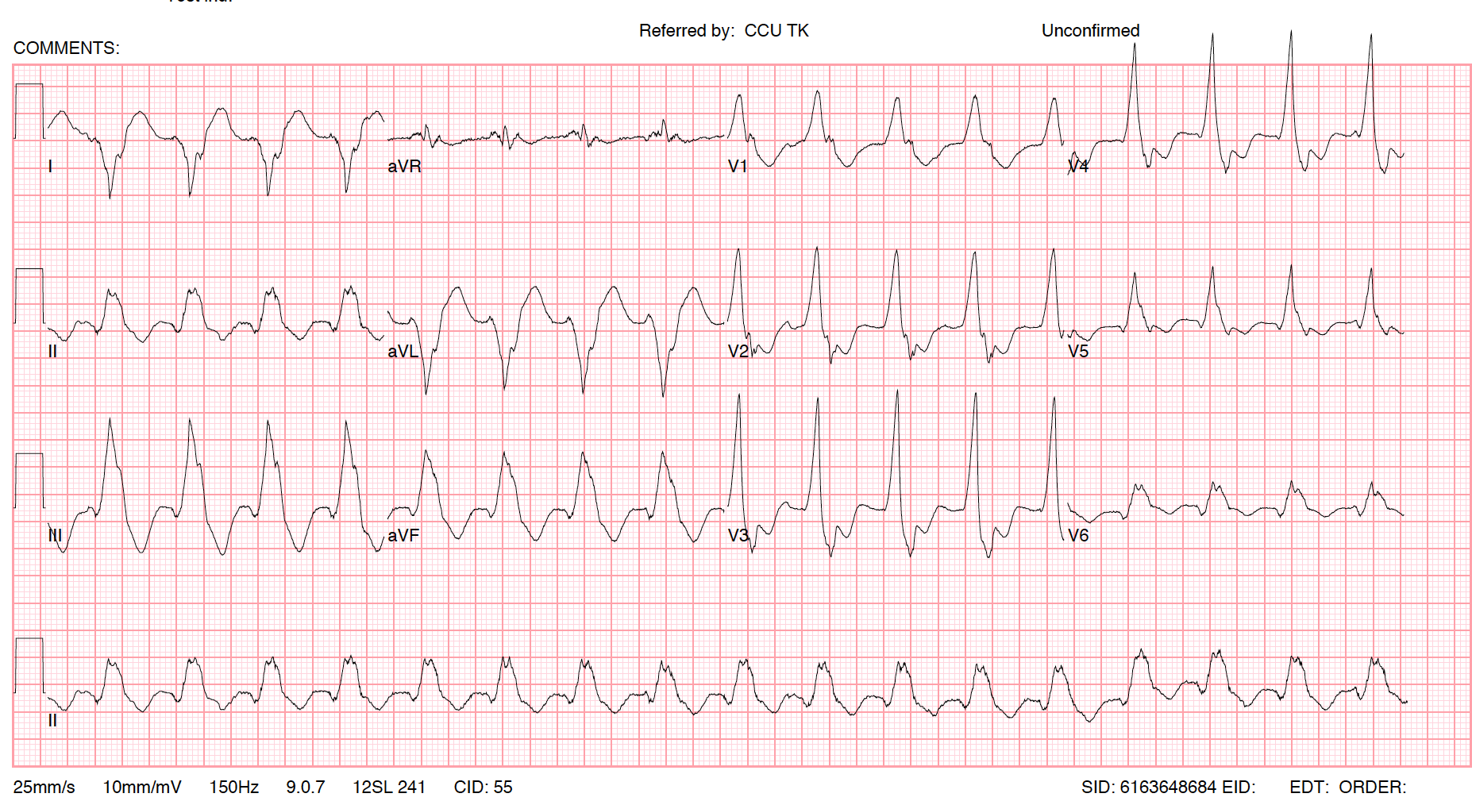Answer
Basal Anterior Lateral LV
Explanation
The ability to localise the exit site for VT from the 12 lead ECG is dependent on many factors including the presence of normal or abnormal underlying myocardium, concomitant antiarrhythmic drugs and the mechanism of VT .
There are some general principles that can help guide an estimation of anatomical location based on interpretation of the 12 lead ECG.
A RBBB pattern suggest an LV origin while a LBBB pattern suggests an RV origin. Narrower QRS suggests the VT origin is closer to the ventricular septum compared with a wide QRS which supports an origin closer to ventricular free wall. However this may not help discriminate in cases of scar or hypertrophy. A superior axis (negative complex in II, III and aVF) supports VT originating from the apical region. An Inferior axis (positive in II, III and aVF) supports an origin at the base of the heart. Positive concordance in the chest leads suggest the origin is from the posterior of the heart with negative concordance suggesting an anterior origin.
Further recommended reading:
https://heart.bmj.com/content/heartjnl/86/5/579.full.pdf
Using the twelve-lead electrocardiogram to localize the site of origin of ventricular tachycardia Josephson et al. April 2005Volume 2, Issue 4, Pages 443–446 https://doi.org/10.1016/j.hrthm.2004.12.014
Twelve-Lead ECG of Ventricular Tachycardia in Structural Heart Disease. De Riva et al. Circ Arrhythm Electrophysiol. 2015 Aug;8(4):951-62. doi: 10.1161/CIRCEP.115.002847. https://www.ahajournals.org/doi/full/10.1161/CIRCEP.115.002847
 Figure 1
Figure 1 Figure 1
Figure 1